#Trinidad and Tobago's national instrument
Explore tagged Tumblr posts
Photo
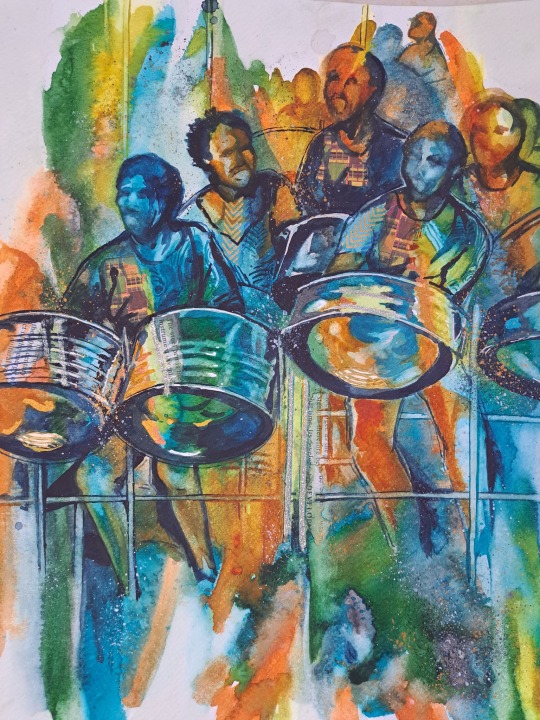

Sexypink - Tessa Alexander Sloane Seale - Carnival work in Trinidad and Tobago-2023
..............................
Statement from Tessa herself ....
Carnival comes home and we celebrate 60yrs of Panorama!
Who ready...Living Ritual series 2023.
Each watercolour and collage pan piece is 11x14" (28x35.6cm) but can be combined to form a larger piece as shown.
This series incorporates my research on ancestral art techniques and textiles acknowledging the contributions of those who against all odds gifted us with our carnival culture.
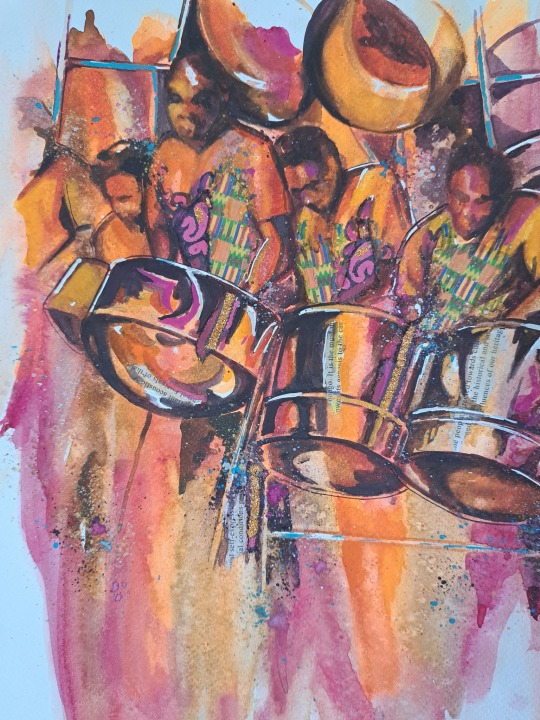

#sexypink/Tessa Alexander Sloane Seale#sexypink/Trinidad and Tobago Carnival#sexypink/watercolor painting#mixed media#Tessa ALexander Sloane Seale#Panorama#steelband#Trinidad and Tobago's national instrument#Pan#60 years of Pan#collage
11 notes
·
View notes
Text

Galleryyuhself - Beat this!
....................................................
Save the Date! Join us for World Steelpan Festival 2024 in Trinidad August 9-11! Events include:
Also join us for the Art Exhibition Series: Gallery Hop Edition from August 5-10 at Rotunda Art Gallery, Art Society of Trinidad and Tobago, Castle Killarney (Stollmeyer’s) and the Carnival Museum.
For more information on #WorldSteelpanFestival visit: https://visittrinidad.tt/worldsteelpanfestival/
#galleryyuhself/poster design#galleryyuhself/World Steelpan Day 2024#galleryyuhself/national instrument of Trinidad and Tobago#tumblr/music festivals#music and art#World Steelpan Day 2024#festivals#pan#steelpan
1 note
·
View note
Text
Trinidad and Tobago is redrawing the island’s coat of arms for the first time since its creation in 1962 to remove references to European colonisation – a move lauded by many in the eastern Caribbean nation.
Explorer Christopher Columbus’s three ships – the Pinta, the Nina and the Santa Maria – will be replaced with the steelpan, a popular percussion instrument that originated on the island.
Prime Minister Keith Rowley first made the announcement on Sunday at a party convention for his governing People’s National Movement to a standing ovation, saying the changes will be made by late September.
“That should signal that we are on our way to removing the colonial vestiges that we have in our constitution,” he said. [...]
Continue Reading.
Tagging: @vague-humanoid
102 notes
·
View notes
Text
instagram
From Brown History on Instagram:
“Did you know that in 1884, the British colonial government in Trinidad & Tobago banned "the beating of any drum, the blowing of any horn, or the use of any other noisy instrument"?
Drumming is an integral part of celebrations for many communities on the island. However, this did not deter the people; instead, it strengthened their resolve to preserve their traditions and religious customs.
Afro-Trinidadians discovered bamboo drums, known as "tamboo bamboo," as a popular new way to sustain the rhythms essential to their culture (see video). By the late 1930s, tamboo bamboo players began turning to metal objects like kitchen utensils, pots, pans, and buckets to create music.
The discovery of oil near the island's shores, coupled with WW II, brought hundreds of thousands of American 55-gallon oil drums to Trinidad. These discarded drums eventually paved the way for steelpans, now recognized as the national instrument of Trinidad & Tobago.
The drumming ban also affected East Indians. The "tassa" drum was central to their religious practices, particularly in Muslim observances. In 1884, more regulations banned the Hosay processions, which honors the martyrdom of Hussain, the grandson of the Prophet.
In an act of civil disobedience, a group of Indian laborers defied the suppression by continuing the Muharram procession as usual, beating tassa drums and carrying tajahs. They believed the law was unjust. However, as the procession passed, police opened fire on the crowd of men, women, and children. Between 18 and 20 people were killed, and hundreds were injured. This tragedy came to be known as "The Hosay Massacre of 1884." The British, however, referred to it as "The Hosay Riots."
Despite historical tensions, the drumming traditions of East Indians and Africans became a shared cultural bond. Over time, these traditions influenced each other, with Afro-Trinidadians playing tassa drums and Indo-Trinidadians performing in steelbands. Hosay has since evolved to include the wider community, becoming a shared event.
Source: Steel Drums and Steelbands by Angela Smith”
#trinidad and tobago#trinidadian culture#trinidadian#trinidad#caribbean#caribbean history#caribbean culture#west indian history#west indies#colonialism#afro caribbean#indo caribbean#afro trinidadian#indo trinidadian#hosay#steelpan#tamboo bamboo#Trinidadian history#history
29 notes
·
View notes
Text
2 notes
·
View notes
Text
OCTAfan's Obscure Obscure and Weird Musical Instruments Tournament Round 1 Part 5: Carillon VS steelpan


Essentially a tower of bells, the Carillon is probably the largest instrument in the lineup, being tied with the pipe organ. It is a percussion instrument that involves a keyboard... and at least 23 large bells that are casted in bronze. They are usually found in churches, but there's a mobile version, although that's still pretty large compared to most of the instruments in the tournament.
Hailing from the Caribbean, the steelpan is the national instrument of Trinidad and Tobago, and is referred to as 'the only instrument invented in the 21st century.' It's basically a steel drum container that that is tuned and hit with mallets.
#OCTAfan says stuff#OCTAfan's Obscure and Weird Musical Instruments Tournament#Carillon#Steelpan#Musical instruments#Tumblr poll#Tumblr tournament#Tournament poll
4 notes
·
View notes
Text
The Steel Pan: Trinidad and Tobago's Musical Marvel
When you think of Trinidad and Tobago, a symphony of vibrant rhythms and melodious tunes probably comes to mind. This rich musical heritage is epitomized by the steel pan, the nation’s beloved instrument. With its origins in the early 20th century, the steel pan has grown to be celebrated worldwide, capturing hearts with its unique sound and cultural significance. As we approach International…
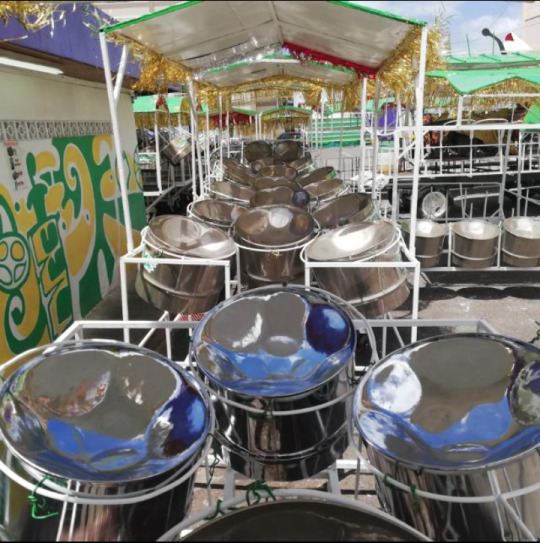
View On WordPress
0 notes
Text
Nurturing Communities: The Ministry of Rural Development's Impact
In the vibrant landscape of Trinidad and Tobago, the Ministry of Rural Development and Local Government stands as a beacon of hope and progress for its people. With a steadfast commitment to uplifting rural communities, this ministry plays a pivotal role in fostering sustainable development and enhancing the quality of life for all citizens. At the heart of its mission lies a dedication to empowering localities, driving economic growth, and fostering social cohesion.
In Trinidad and Tobago, the Ministry of Rural Development and Local Government serves as a cornerstone for initiatives aimed at bolstering rural areas' infrastructure, services, and overall well-being. From the rolling hills of Trinidad to the picturesque shores of Tobago, the ministry's presence is felt, resonating through its various programs and projects designed to address the unique needs of each community.
In recent years, the Ministry of Rural Development Tobago has spearheaded numerous initiatives to promote sustainable agriculture, enhance access to education and healthcare, and improve infrastructure in rural areas. Through strategic partnerships with local stakeholders and international organizations, the ministry has been able to implement innovative solutions to longstanding challenges, driving positive change and fostering resilience in the face of adversity.
Similarly, the Ministry of Works Trinidad & Tobago plays a crucial role in supporting the rural development agenda by overseeing the planning, construction, and maintenance of critical infrastructure projects across the twin islands. From road networks to drainage systems, the ministry's efforts are instrumental in enhancing connectivity, facilitating commerce, and improving the overall quality of life for rural residents.
Central to the ministry's approach is a commitment to community engagement and grassroots empowerment. By actively involving local residents in the decision-making process and soliciting their input on development priorities, the ministry ensures that its initiatives are responsive to the needs and aspirations of the people they serve. Through capacity-building programs and training initiatives, the ministry also equips communities with the tools and resources they need to chart their own path to prosperity.
As Trinidad and Tobago continues on its journey of growth and development, the Ministry of Rural Development Trinidad remains steadfast in its commitment to building inclusive, resilient, and thriving communities. By harnessing the collective strength and ingenuity of its people, the ministry paves the way for a brighter future where every citizen has the opportunity to flourish and thrive. Together, we can create a nation where no community is left behind, and where the promise of progress reaches every corner of our beautiful islands.
#Ministry of Rural Development Tobago#Ministry of Rural Development and Local Government#Ministry of Works Trinidad & Tobago
0 notes
Text
World Steelpan Day honours the national instrument of Trinidad & Tobago - Global Voices
World Steelpan Day honours the national instrument of Trinidad & Tobago Global Voices http://dlvr.it/Stvrh2
0 notes
Video
tumblr
#steel pan#trinidad & tobago#national instrument#declared vs proclaimed#patrick manning#sat maraj#tabla#afro trinidad#indotrinidad#race relations#grenada#african diaspora#indian diaspora
0 notes
Video
tumblr
In celebration of our local culture, @google is honouring the national instrument of Trinidad and Tobago, which is called, the Steelpan, by drawing special attention to it as a Google #Doodle today dated Tuesday 26th July, 2022.DID YOU KNOW that the Steelpan (also known as or abbreviated as, Pan) is a musical instrument indigenous to the Caribbean islands of Trinidad and Tobago and is the ONLY acoustic musical instrument to be invented in the 20th century?This Doodle was illustrated and put together by Nicholas Huggins Nicholas Huggins Creative of Backyard Design Co, Mick Seegobin, Etienne Charles, Etienne Charles, Len Boogsie Sharpe, Josanne Meuzically'Fit Francis, @lukeawalker, @castro.pg14, Troubadour Recording Studios, @angelicamckinley and #BillySheeder 🇹🇹🛢
#trinidadandtobago#steelpan#pan#culture#googledoodles#didyouknow#dyk#didyouknowfacts#musicalinvention#lintromusicpublishing
4 notes
·
View notes
Text




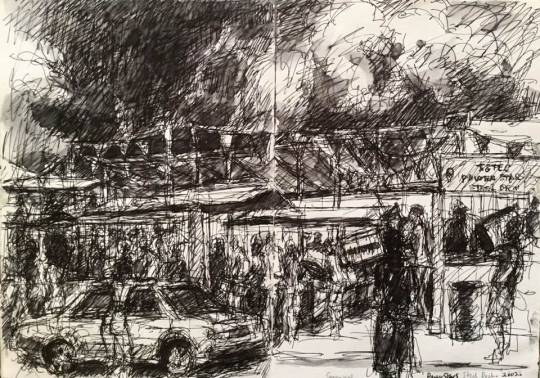
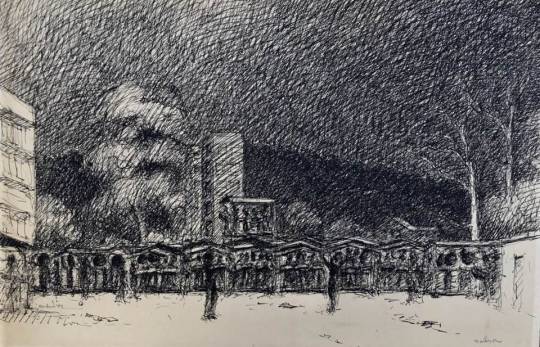
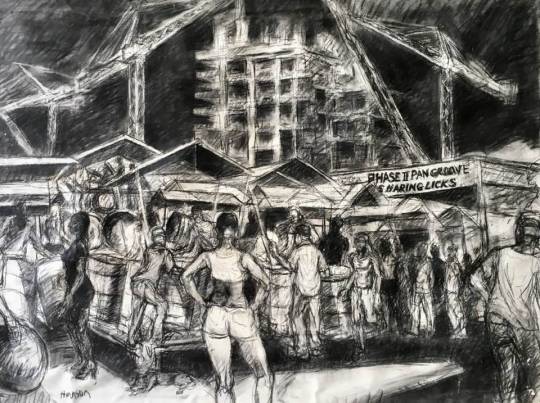
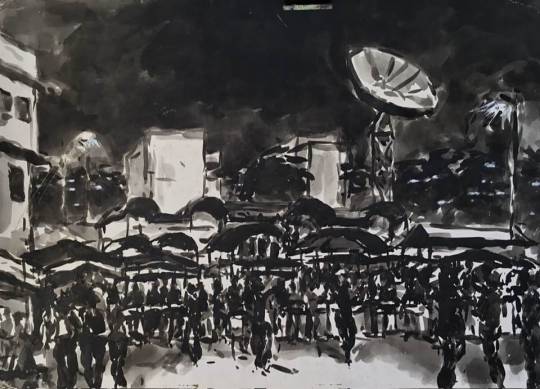
Sexypink - ARTISTS AND THEIR PROCESSES
Jackie Hinkson's drawings in order of dates
Invaders (no date)
Despers, 2023.
All Stars, 2014
Phase II
Mr Hinkson sketching in plein air pan style
T&TEC Power Stars, 2002
Renegades, 1980s
Phase II (no date)
Renegades (no date)
Trinidad and Tobago Artist Jackie Hinkson has had a stellar career as a Painter of scenes of life in the Caribbean. He is arguably the only person whose work can map the ever changing geographies of the islands. Here he is sketching his observations of players enjoying the national instrument on the roadways in August 2023, the year that PAN DAY became internationally official.
#Jackie Hinkson#Trinidad and Tobago Painters#Pan#Steelband#sketches over the years#tumblr/Jackie Hinkson#tumblr/charcoal drawings#drawings on paper#Artists and Icons#Trinidad and Tobago's national instrument#National Pan Day
1 note
·
View note
Text



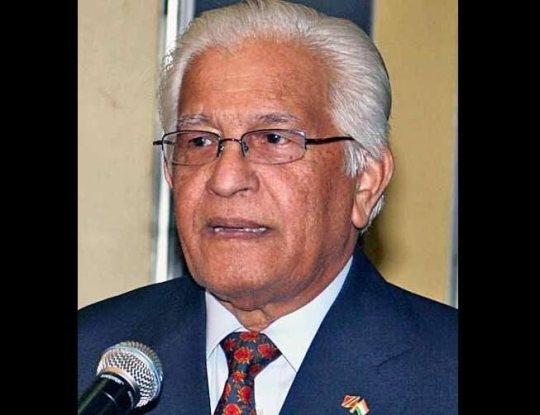
Galleryyuhself - Former Prime Minister of Trinidad and Tobago The Right Honorable Basdeo Panday has passed away. His is a shattering loss to the nation. May he rest in power.
#galleryyuhself/Prime Minister Basdeo Panday#galleryyuhself/bereavement#galleryyuhself/political leaders#galleryyuhself/Trinidad and Tobago politics#tumblr/Prime Minister Basdeo Panday#tumblr/Past Leaders of Trinidad and Tobago#Basdeo Panday#Union Leader#Pan as a national instrument#Indo/Trinbagonian Leaders#maverick#son of the soil#leader#statesman
0 notes
Photo

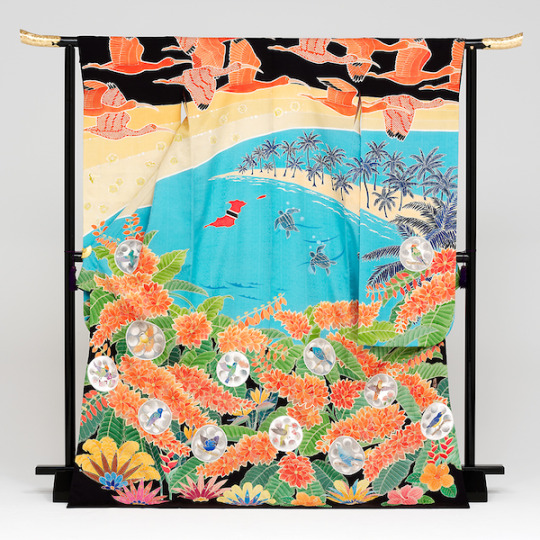
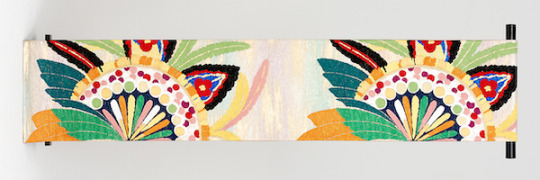
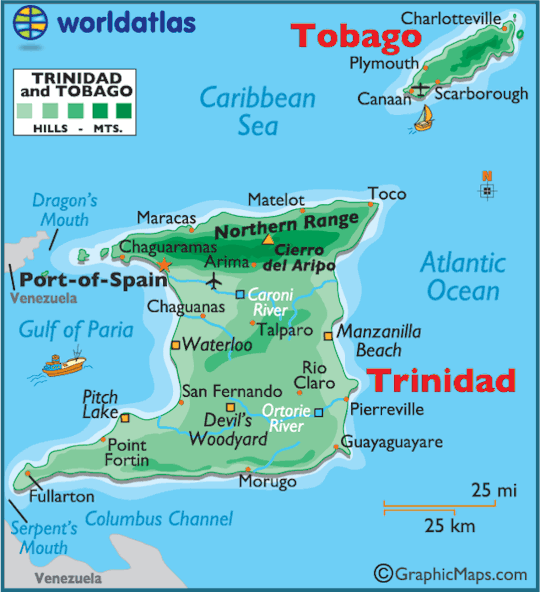
Parade of Nations - Trinidad and Tobago
French: Trinité-et-Tobago // English: Trinidad and Tobago // Japanese: トリニダード・ト���ゴ (Torinidādo Tobago)
Trinidad and Tobago formed its National Olympic Committee in 1946 and participated in its first Olympics as a country at the 1948 London Summer Olympics. They haven’t hosted any Olympic Games, but they’ve participated in 17 Summer Games and 3 Winter Games. The Olympic sports in which Trinidad and Tobago has medaled are Athletics, Swimming, and Weightlifting.
Kimono Maker: Takae Iguchi/ 井口 ��枝
“Based on the red and black national flags, I drew a bright image of the Caribbean Sea centered on the red national bird Scarlet Ibis and the red national flower Chaconia, which fly in groups. In addition, silver foil was placed on the circle that resembled the percussion instrument steelpan that originated in this country, and colorful birds and hummingbirds were drawn inside. It is said that it is a world-class carnival, and there are also feather decorations. In the center, the world's largest turtle, the leatherback turtle, is swimming towards Trinidad and Tobago.”[1]
Obi Maker: Nishijin-Maizuru/ 西陣まいづる
“The flower train that appears in the carnival and the gorgeous costumes of the feathers that decorate are the basis of the design. The dynamic feeling that makes you want to dance at any moment is expressed by hand weaving.” [1]
Bibliography
Source 1 – Kimono Project for Trinidad and Tobago
(https://kimono.piow.jp/nation/123.html)
Index Page – IOWKP x Tokyo 2020 Parade of Nations
#kimono#furisode#ofurisode#imagineoneworldkimonoproject#iowkp#tokyo2020#kimonoparadeofnations#kpon#trinidadandtobago#trinidadandtobagokimono#trinidadandtobagofurisode
43 notes
·
View notes
Text

From the National Archives of Trinidad and Tobago on Instagram:
“Check out this photo of the Louis family in Trinidad, who have made parang instruments for generations. These craftsmen can be seen here carefully assembling "cuatros" with inlaid wooden panels.
The musical instruments used by parang singers, or parranderos, are a significant part of what makes parang such a unique art form. Maracas or chac-chacs are instruments that were used by the First Peoples, while the cello, violin and guitar are Spanish in origin.
Today, parang is most popular in the areas of Lopinot, Paramin, Rio Claro, Arima and Santa Cruz, with the National Parang Association of Trinidad and Tobago often holding annual events countrywide.
This photo is courtesy of the book "Patterns of Progress: Trinidad and Tobago 10 Years of Independence", designed and edited by Roy Boyke.
This book is part of the National Archives of Trinidad and Tobago Reference Library.
References:
Mavrogordato, Olga J. Voices in the Street. Paria Pub. Co., 1996.
Taylor, Daphne Pawan., and George Alexander Thomas. Parang of Trinidad. National Cultural Council of Trinidad and Tobago.”
#trinidad and tobago#caribbean#west indies#west indian#trinbagonian#trinidad#trinidadian#caribbean culture#culture#trinidadian culture#West Indian culture#Instagram
14 notes
·
View notes
Text
What is WHO’s International Pandemic Treaty?
By Amit Dutta
‘Not if, but when’
“The question is not if, but when. Together, we must be better prepared to predict, prevent, detect, assess and effectively respond to pandemics in a highly coordinated fashion”, they said.
The main goal of the treaty, which would be rooted in the WHO Constitution, would be to foster a comprehensive approach to strengthen national, regional and global capacities and resilience to future pandemics, the leaders added.
Standing with WHO Director-General Tedros Adhanom Ghebreyesus, the leaders signing on so far, represent Albania, Chile, Costa Rica, the European Council, Fiji, France, Germany, Greece, Indonesia, Italy, Kenya, the Netherlands, Norway, Portugal, the Republic of Korea, Romania, Rwanda, Senegal, Serbia, South Africa, Spain, Thailand, Trinidad and Tobago, Tunisia, the United Kingdom, and Ukraine.
“At a time when COVID-19 has exploited our weaknesses and divisions, we must seize this opportunity and come together as a global community for peaceful cooperation that extends beyond this crisis”, the leaders said.
‘We must act boldly’: Dr. Tedros
Speaking at a press conference later in the day, WHO Director-General Dr. Tedros highlighted that the idea behind the proposal for the treaty is to “systematically tackle the gaps exposed by COVID-19”.
The pandemic has brought out the best and worst in humanity, he added, recalling “acts of incredible courage” from health workers and communities around the world, on a daily basis, but also inequalities in societies, geopolitical fault lines and frayed trust in public institutions.
“The impacts on our societies, economies and health, especially for the poor and the most vulnerable, are too significant”, Dr. Tedros said, stressing that “we cannot do things the way we have done them before and expect a different result…we must act boldly”.
He went on to note that the treaty would strengthen the implementation of the International Health Regulations (IHR) as well as provide a framework for international cooperation and solidarity.
It would help build resilience to pandemics and other global health emergencies, with robust national and global preparedness systems; ensure timely and equitable access to pandemic countermeasures, including vaccines; support sustainable funding and capacity for prevention, detection, and responses to outbreaks; and promote mutual trust.
Member States’ decision
Dr. Tedros also said that ultimately, the Member States would decide.
“How such a treaty is developed and what it looks like, and whether it is ratified, is a matter for our Member States – the nations of the world”, he added.
“We must leave a legacy for our children: a safer world for all.”
What's the purpose of an international agreement on pandemics?
The proposal for an international instrument on pandemic prevention, preparedness and response is guided by a spirit of collective solidarity, anchored in the principles of fairness, inclusiveness and transparency.
Neither individual governments nor the global community can entirely prevent pandemics. But the international community needs to be much better prepared and better aligned in responding to possible future pandemics across the entire cycle of detection, alarm and response.
The instrument would set out the objectives and fundamental principles in order to structure the necessary collective action to fight pandemics.
An international convention, agreement or other international instrument on pandemics would support and focus on:
early detection and prevention of pandemics
resilience to future pandemics
response to any future pandemics, in particular by ensuring universal and equitable access to medical solutions, such as vaccines, medicines and diagnostics
a stronger international health framework with the WHO as the coordinating authority on global health matters
the "One Health" approach, connecting the health of humans, animals and our planet
More specifically, such an instrument can enhance international cooperation in a number of priority areas, such as surveillance, alerts and response, but also in general trust in the international health system.
Information courtesy: United Nations, WHO, Council of the EU and the European Council
2 notes
·
View notes